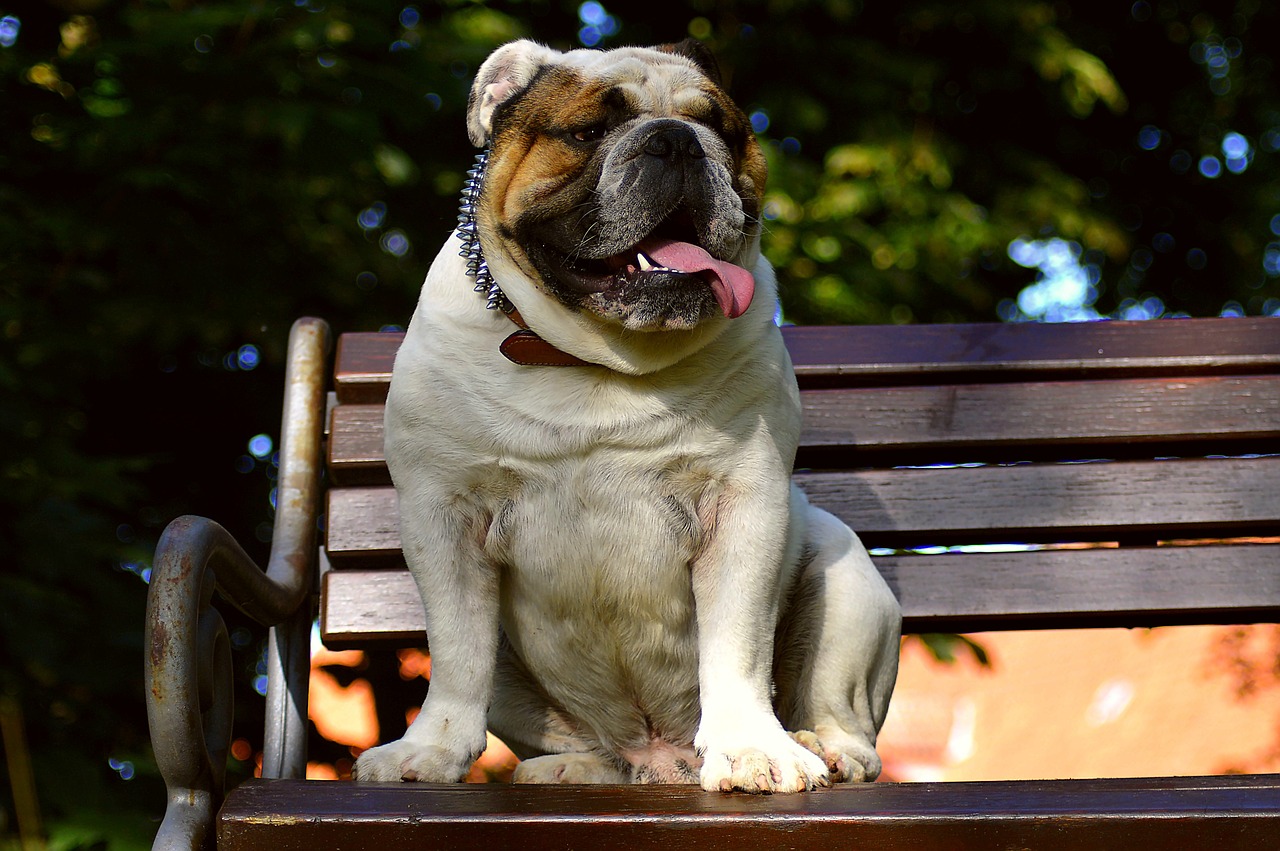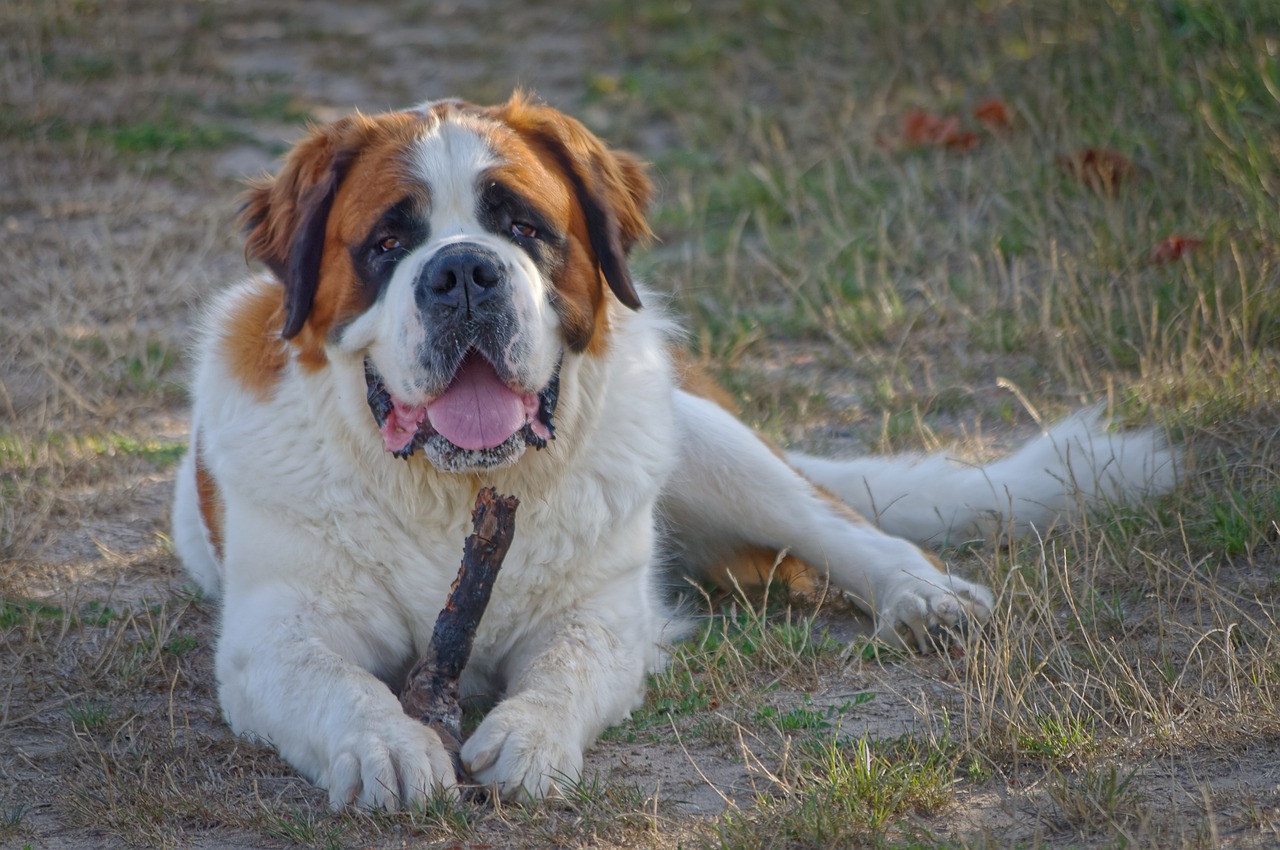Feeding time can be one of the most anticipated moments of a dog’s day, but it can also turn into a messy affair, especially with certain breeds. While some dogs eat neatly, barely leaving a trace, others seem to transform mealtime into a chaotic event, spreading food and water far beyond their bowls. This behaviour can be attributed to a variety of factors, including the dog’s physical characteristics, eating style, and level of enthusiasm for food. In this article, we will explore six dog breeds known for their particularly messy eating habits, diving into the reasons behind their mealtime manners and offering insights into how to manage the mess they leave in their wake.
1. English Bulldog
English Bulldogs are notorious for their messy eating habits, a consequence of their distinctive facial structure. Their brachycephalic (short-nosed) shape makes it difficult for them to pick up food efficiently, leading to a lot of pushing around of food and water, often outside their bowls. The wrinkles and folds on their face can also trap food particles, requiring regular cleaning to prevent irritation and infection. To minimize the mess, owners can use specially designed bowls that make it easier for Bulldogs to access their food and slow down their eating, potentially reducing the spread of debris.

2. Saint Bernard
The Saint Bernard is a gentle giant whose size and jowly face contribute to notably messy eating habits. Their large mouths and loose lips allow food and water to escape easily, often resulting in spills and dribbles around the feeding area. Given their substantial size, the amount of food and water they consume—and subsequently scatter—is considerable. Elevated food bowls may help contain some of the mess by reducing the distance food and water can fall, but owners should also be prepared for regular cleanup duties after mealtime.

3. Boxer
Boxers are energetic and enthusiastic eaters, traits that can lead to a less-than-tidy eating area. Their deep chests and relatively short muzzles mean they may have to lean into their meals more than other breeds, increasing the likelihood of food escaping the bowl. Their excitement for food can also cause them to eat quickly, scattering kibble as they go. Slow-feeder bowls are a great option for Boxers, encouraging them to take their time and reducing the chance of food ending up outside the bowl.

4. Labrador Retriever
Labrador Retrievers are known for their love of food, and their voracious appetite can make mealtime a messy affair. Labs tend to eat quickly, hardly taking a breath between bites, which can lead to food being flung from their bowls as they eagerly consume their meals. Their powerful tails can also contribute to the mess, sweeping nearby objects onto the floor. Feeding Labs in a contained area and using heavy, non-slip bowls can help manage the mess, as can training them to eat more slowly.

5. Pug
Pugs, with their flat faces and wide eyes, are also prone to messy eating. Similar to Bulldogs, their brachycephalic features make it challenging to pick up food efficiently, resulting in a lot of pushing food out of the bowl. Additionally, Pugs are enthusiastic eaters who may get more excited about mealtime than focusing on neatness. Special flat-faced dog bowls can help Pugs access their food more easily, potentially reducing mess. Regular facial cleaning post-meal is also necessary to remove any food trapped in their wrinkles.

6. Beagle
Beagles are scent hounds with a strong sense of smell and a strong appetite, often leading them to eat quickly and messily. Their determination to get every last bit can result in food being scattered around their eating area. Additionally, their keen noses may lead them to search for more food, knocking over containers and spreading messes in their quest. Feeding Beagles in a designated area away from where food is stored and using puzzle feeders can slow down their eating and keep them focused, reducing mess.

Messy eating habits in dogs can be attributed to a variety of factors, including breed-specific physical characteristics and sheer enthusiasm for food. Breeds like the English Bulldog, Saint Bernard, Boxer, Labrador Retriever, Pug, and Beagle are particularly known for their untidy mealtime manners. Employing strategies such as using breed-appropriate feeding bowls, slow feeders, and designated eating areas can help manage the mess, making mealtime a more enjoyable experience for both dogs and their owners. Regular post-meal cleanups and facial cleaning for breeds with wrinkles are also essential to maintain hygiene and prevent skin issues.
 Toledo, United States.
Toledo, United States.